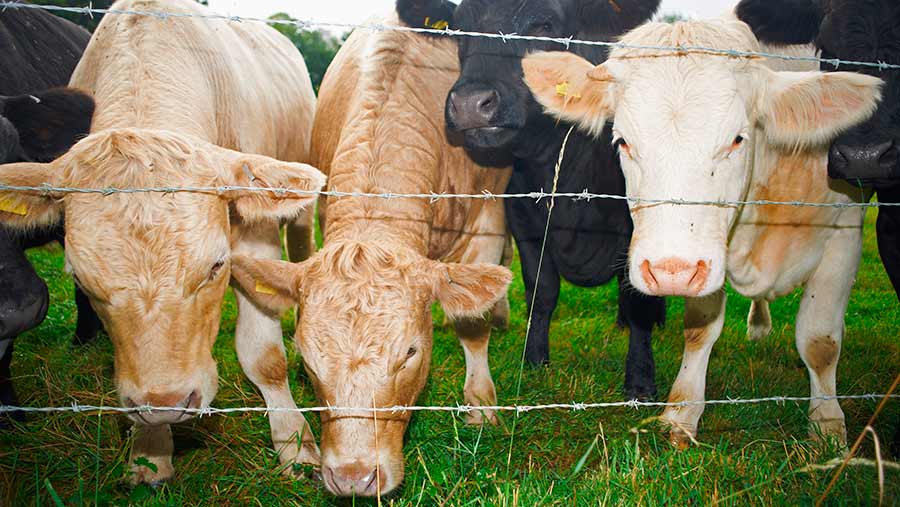Business Clinic: Mob grazing – tips for success
 © Cultura/Rex/Shuterstock
© Cultura/Rex/Shuterstock Farmers Weekly’s Business Clinic experts offer free advice on legal, finance, tax, insurance, farm management and land issues.
Whether you have a legal, tax, insurance, management or land issue, Farmers Weekly’s Business Clinic experts can help.
In this article, Stuart Nicholls of Savills offers advice on how to introduce and manage mob grazing.
Q I am considering mob grazing to minimise winter housing costs – what would be the best way to approach this?
A The intensive rotational grazing system approach of mob grazing typically has high stocking densities but low stocking rates.
 Stuart Nicholls, agribusiness consultant, Savills Food and Farming
Stuart Nicholls, agribusiness consultant, Savills Food and FarmingThe system centres around maximising utilisation of grazed forage for feed and minimising housing periods to reduce costs.
It is meant to replicate the traditional grazing herds, such as bison, with animals grazing a percentage of forage and treading in a percentage to provide organic matter for the soil.
Mob grazing will work effectively at both a small and large scale in terms of herd or flock size, however grazing paddock sizes will need to be adjusted appropriately.
Mob grazing is suited to blocks of ground where livestock can be moved from one block to the next without the need for haulage of livestock by road.
See also: Business Clinic: spring cropping – beans or fallow?
Due to the nature of the system, mob grazing suits organic systems although it works equally as well in conventional systems.
It can be suited to large areas of less productive land, such as wild flower meadows in HLS/ELS/CSS, which typically have lower grass growth rates and restrictions on timing of grazing and nitrogen application.
Mob grazing can also be used successfully on arable ground in short term herbal/grass leys, where improvements in soil organic matter and fertility are looking to be made.
Top tips for mob grazing
- Create a grazing management plan based around key dates, ie if you have key dates for TB testing for example, aim to be in paddocks near to the handling system around these dates rather than at the other end of the farm
- Be flexible – plan and re-plan based on what your livestock is telling you
- Build livestock numbers up gradually once you have an understanding of how the system works on your farm
- You know your farm better than anybody else – what works for a neighbour or adjoining landowner will not necessarily work for you and your system
- Maximise the grazed period and consider supplementing feed with forage if there is less grass than planned for, or if consumption is higher
- Calculate the winter store of feed to estimate your stock numbers for the block of ground used
- Plan your paddocks/blocks prior to fencing – electric fencing allows paddock size to be adjusted easily throughout the year
- High grass growth rates reduce the time period for grazing within the paddock but will allow for shorter recovery periods
- Conversely, slower grass growth rates can extend the period of grazing within the paddock but also result in a longer recovery period
- Access to water can be problematic. However, cheap solutions can readily be found.
Do you have a question for the panel?

Outline your legal, tax, finance, insurance or farm management question in no more than 350 words and Farmers Weekly will put it to a member of the panel. Please give as much information as possible.
Send your enquiry to Business Clinic, Farmers Weekly, RBI, Quadrant House, The Quadrant, Sutton, Surrey SM2 5AS.
You can also email your question to fwbusinessclinic@rbi.co.uk.
